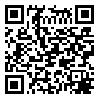Volume 64, Issue 11 (7 2006)
Tehran Univ Med J 2006, 64(11): 1-10 |
Back to browse issues page
Download citation:
BibTeX | RIS | EndNote | Medlars | ProCite | Reference Manager | RefWorks
Send citation to:



BibTeX | RIS | EndNote | Medlars | ProCite | Reference Manager | RefWorks
Send citation to:
Akrami SM, Heidari J. Association studies in common endocrine diseases (review article). Tehran Univ Med J 2006; 64 (11) :1-10
URL: http://tumj.tums.ac.ir/article-1-866-en.html
URL: http://tumj.tums.ac.ir/article-1-866-en.html
Abstract: (5601 Views)
Our understanding of the pathogenesis of endocrine disorders increase rapidly by genetic studies at the molecular level. Common endocrine disorders such as diabetes mellitus, obesity, osteoporosis, dyslipidemia and cancer follow the multifactorial model in the genetic aspect. This review tries to clarify the approach in molecular studies of such diseases for clinicians in different specialties. How to evaluate a possible association between a single nucleotide polymorphism and an endocrinopathy or its complication is the main concern of this review. Two approaches for gene mapping will be discussed as well as main challenges regarding each approach. All such genetic studies ideally include some test of the association between genome sequence variation and the phenotype of interest such as the trait itself, the presence of a given complication, or measures of some endocrinopathy-related intermediate trait.
Despite different advances in this analysis, there are major concerns regarding the overall performance and robustness of genetic association studies. By using powerful new high-throughput methods, further insights to molecular basis of such endocrine disorders can be expected. Close correlation between geneticists and clinicians can effectively bridge between basic sciences and clinical investigations.
| Rights and permissions | |
 |
This work is licensed under a Creative Commons Attribution-NonCommercial 4.0 International License. |





